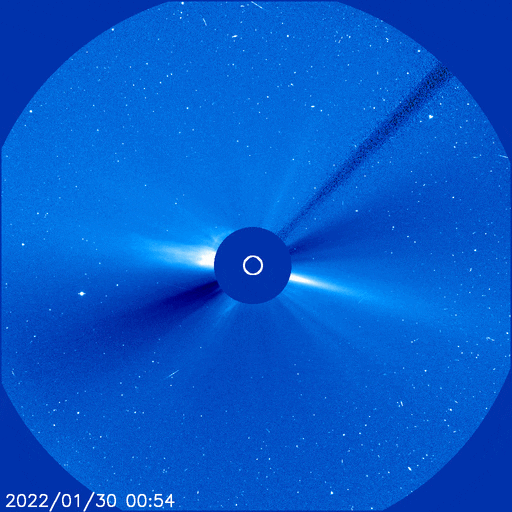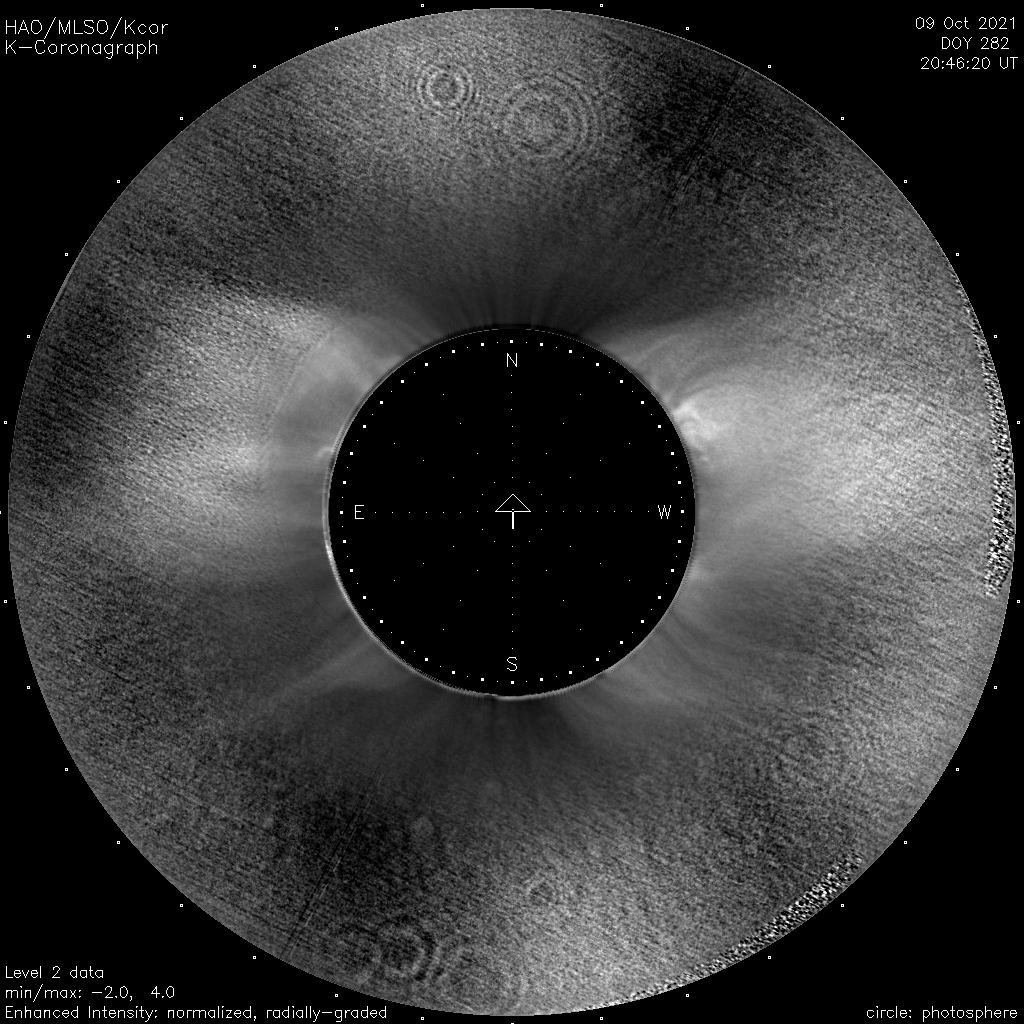Predicting Space Weather

A powerful solar flare from this CME on January 30, 2022, hit Earth on February 3, destroying 40 StarlinkX satellites launched one day prior.
SOHO
On Earth, we can observe the sky for signs that a storm is coming. For signs that space weather is approaching, we observe the Sun with satellites, spacecraft, and ground-based telescopes. Space weather doesn’t have clouds or precipitation like weather here on Earth. Instead, it is storms of electromagnetic and particle radiation from the Sun that are hurtling through space at close to the speed of light.
When solar storms interact with Earth’s atmosphere, they can create conditions that disrupt or even destroy satellites and communication systems. Severe space weather can damage power grids, while less severe space weather might disrupt radio connections and create dazzling auroras.
Predicting space weather can help us prepare for potential damage or disruptions that may occur to infrastructure here on Earth, or to satellites orbiting above Earth. When severe space weather is predicted, precautions can involve temporarily taking power grids offline or moving satellites to different orbital positions.
How Do We Predict Space Weather?
Space weather prediction is still very challenging, and researchers are currently exploring ways to increase the amount of lead time before a solar storm reaches Earth. One way to predict space weather is to closely monitor the short, energetic bursts of solar eruptions from the Sun's surface. Changes in the size, position, and number of sunspots can also be indicators of solar activity - when there are more sunspots, the Sun is more active. With enhanced observation and prediction techniques, such as using artificial intelligence (AI) in conjunction with satellites, we can increase the time we have to prepare for the impacts of a solar storm.

This coronal mass ejection was observed by the High Altitude Observatory (HAO) on October 9, 2021. Monitoring solar storms like this one helps us predict when space weather conditions will impact us on Earth.
HAO/NCAR
A ground-based instrument called the K-Coronagraph at NCAR’s Mauna Loa Observatory might be able to help predict when harmful solar energetic particles (SEPs) are heading toward astronauts in the International Space Station. By measuring white light from the lower corona, this K-Coronagraph is able to detect the beginnings of solar activity that creates space weather, providing an extra 20 minutes of warning time. With this extra time astronauts can take safety measures, such as positioning themselves behind protective metal shields within the space station.
Space Weather Rankings
NOAA's Space Weather Prediction Center (SWPC) estimates the impacts of three different types of space weather - geomagnetic storms, solar radiation storms, and radio blackouts - to help indicate how severe the events might be. Each of the three event types is ranked on a five-point scale from minor (1) to extreme (5) to provide descriptions of how events at the different levels might affect power systems, satellite operations, spaceflight operations, navigation systems, and biological organisms. Learn more about NOAA’s space weather scales.